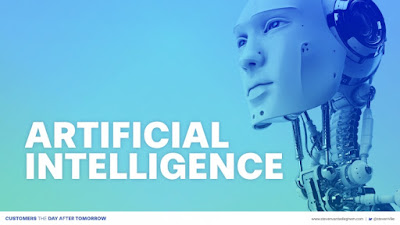Gifi is the world first transceiver Integrated on a single Chip that operate at 60hz on the CMOS process. It will allow Wireless transfer of audio And Video Data up to 5 gigabits per second. it is very small in size.
We’re already seeing the beginnings of self-driving cars, though the vehicles are currently required to have a driver present at the wheel for safety. Despite these exciting developments, the technology isn’t perfect yet, and it will take a while for public acceptance to bring automated cars into widespread use.
2. Cyborg Technology
One of the main limitations of being human is simply our own bodies—and brains. Researcher Shimon Whiteson thinks that in the future, we will be able to augment ourselves with computers and enhance many of our own natural abilities. Though many of these possible cyborg enhancements would be added for convenience, others might serve a more practical purpose. Yoky Matsuka of Nest believes that AI will become useful for people with amputated limbs, as the brain will be able to communicate with a robotic limb to give the patient more control. This kind of cyborg technology would significantly reduce the limitations that amputees deal with on a daily basis.
3. Taking over dangerous jobs
Robots are already taking over some of the most hazardous jobs available, including bomb defusing. These robots aren’t quite robots yet, according to the BBC. They are technically drones, being used as the physical counterpart for defusing bombs, but requiring a human to control them, rather than using AI. Whatever their classification, they have saved thousands of lives by taking over one of the most dangerous jobs in the world. As technology improves, we will likely see more AI integration to help these machines function.
Other jobs are also being reconsidered for robot integration. Welding, well known for producing toxic substances, intense heat, and earsplitting noise, can now be outsourced to robots in most cases. Robot Worx explains that robotic welding cells are already in use, and have safety features in place to help prevent human workers from fumes and other bodily harm.
4. Solving climate change
Solving climate change might seem like a tall order from a robot, but as Stuart Russell explains, machines have more access to data than one person ever could—storing a mind-boggling number of statistics. Using big data, AI could one day identify trends and use that information to come up with solutions to the world’s biggest problems.
5. Robot as friends
Who wouldn’t want a friend like C- 3p0? At this stage, most robots are still emotionless and it’s hard to picture a robot you could relate to. However, a company in Japan has made the first big steps toward a robot companion—one who can understand and feel emotions. Introduced in 2014, “Pepper” the companion robot went on sale in 2015, with all 1,000 initial units selling out within a minute. The robot was programmed to read human emotions, develop its own emotions, and help its human friends stay happy. Pepper goes on sale in the U.S. in 2016, and more sophisticated friendly robots are sure to follow.
6. Improved elder care
For many seniors, everyday life is a struggle, and many have to hire outside help to manage their care, or rely on family members. AI is at a stage where replacing this need isn’t too far off, says Matthew Taylor, computer scientist at Washington State University. “Home” robots could help seniors with everyday tasks and allow them to stay independent and in their homes for as long as possible, which improves their overall well-being.
Artificial Intelligence Facts (top 6)
1)A scientist named Carl Djerassi not only developed the birth control pill, but also wrote over 1200 papers on different subjects, and wrote one of the first Artificial Intelligence programs in 1965. A program called DENDRAL, which could automatically discover unknown forms of medications
2) Artificial Intelligence has crushed all human records in the puzzle game “2048,” achieving a high score of 839,732 and beating the game in only 973 moves without using any undo.
3) University of Washington students created an Artificial Intelligence program to detect “that’s what she said” jokes.
4)Facebook is developing an Artificial Intelligence design to understand user emotions, identify objects in photos, and predict user actions.
5) Google has a Quantum Artificial Intelligence Lab with an actual quantum computer.
6)Auto correction is also part of AI.
Dangerous Facts In AI
The AI Apocalypse
There’s little doubt that AI has the potential to greatly improve our lives. AI will make the roads safer, help in medicine, aide the disabled and the elderly, work customer service and a number of countless other jobs. However, AI also poses an incredible threat, and this isn’t the stuff of science fiction, either. Top scientists and technologists like Stephen Hawking, Bill Gates and Elon Musk believe that AI is a very real, and dangerous threat to humankind.
It’s so dangerous that Max Tegmark, a physicist at MIT, compared it to the development of nuclear weapons and says we may only be able to do it right the first time. In fact, there has been a push to actually slow down advancement on AI and focus more on containment. Containment is important because if we were to ever lose control of AI, we may never get it back. Then it’s just a matter of time, since the AI could wipe out humanity because it could calculate that humans are a virus-like being, or it could kill humans as a way of self-preservation. Essentially, AI will either fix all of our problems or destroy us all. In other words, The Terminator and The Matrix aren’t nearly as farfetched as we previously believed.
Artificial Intelligence Can Repair Itself
On the terrifying end of the spectrum, there was a paper published this year about a robot that could rebuild itself, even after losing two of its six legs. The robot doesn’t know what’s broken, but notices that its performance has dropped. Then, using an algorithm based on trial and error, the robot can figure out what’s wrong and how to repair itself. The researchers who developed the robot said that as it fixes itself, it updates its database with all the things that will not work in a phase called “simulated childhood.”
This phase lasts for a few minutes and during that time, the robot processes 13,000 possible movements. Those movements are pulled from 10^47 different behaviors, which is an unfathomable number. For a comparison, that’s how many atoms make up the Earth. The implications of this type of artificial intelligence are essentially limitless. Some of the more exciting prospects include search and rescue and deep sea and space exploration for security purpose it is dangourous
I hope you like this information and you learned some new about artificial intelligence
.
















